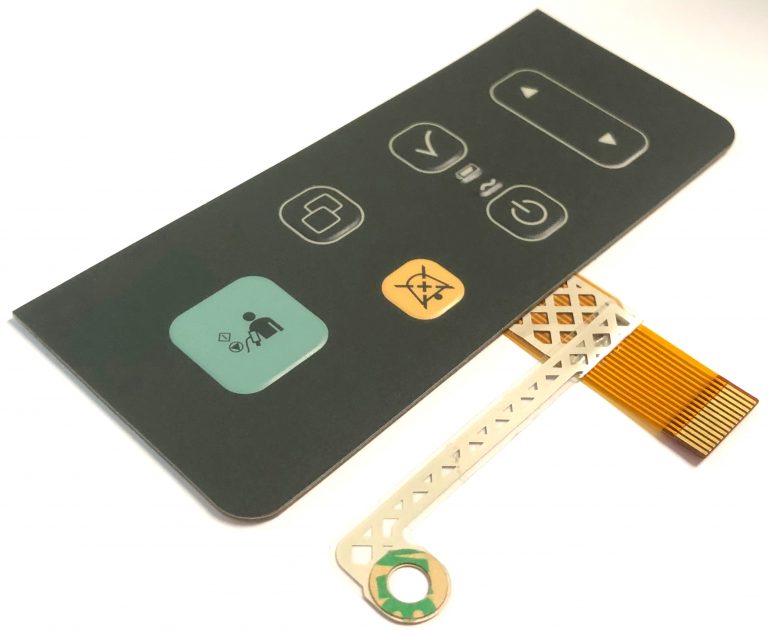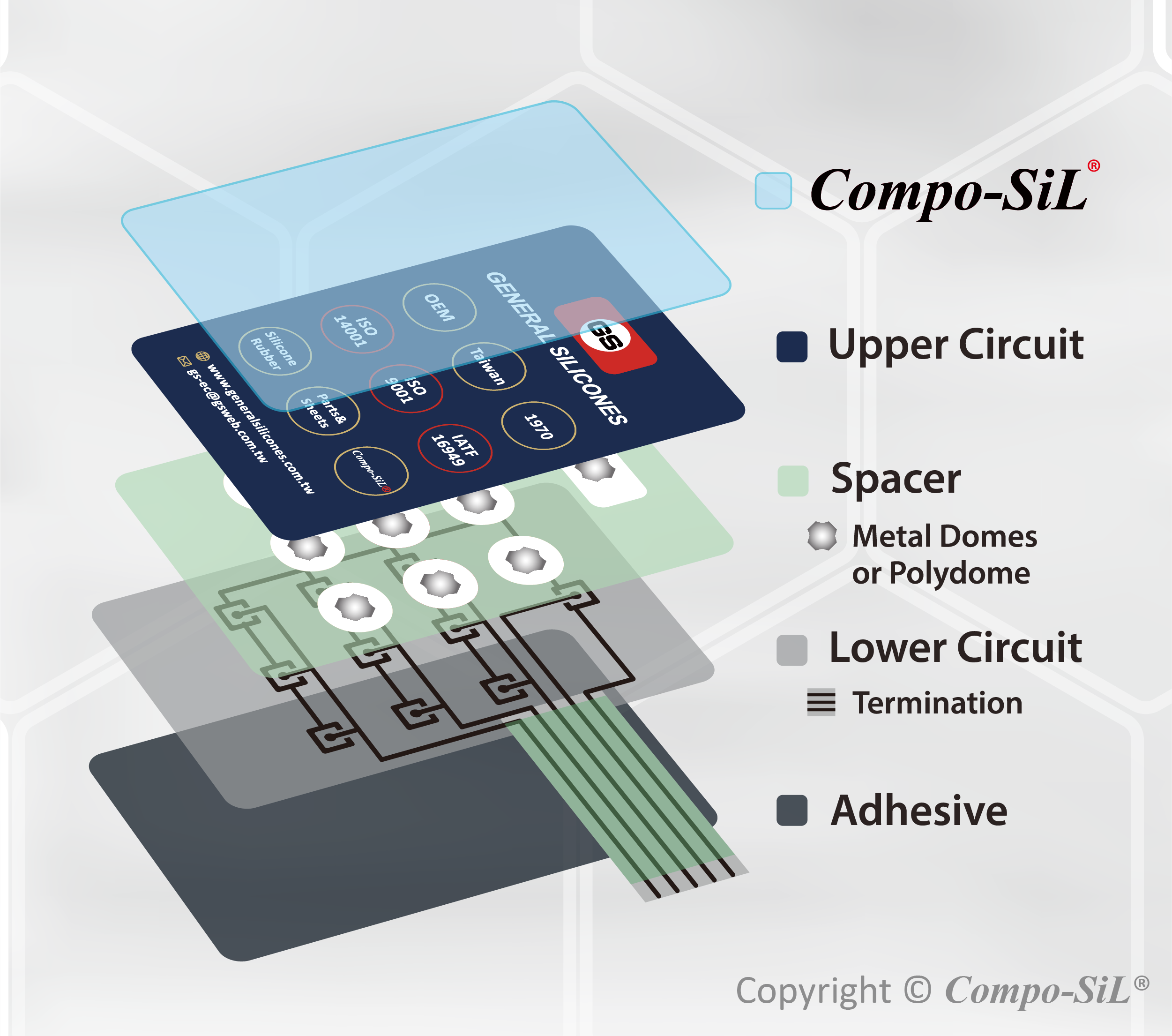Membrane switch vs. traditional buttons: pros and cons
The Manufacturing Refine Behind Membrane Layer Change: What You Need to Know
The manufacturing procedure behind membrane switches over combines cautious layout, product choice, and quality assurance. It begins with recognizing the ins and outs of membrane layer switch design and proceeds via various phases, including material choices and printing methods. Each stage plays an important function in making certain performance and longevity. The intricacies of layer construction and the strenuous screening requirements might expose understandings that are not quickly noticeable. What lies past these fundamental components?
Recognizing Membrane Layer Switch Layout
Although membrane buttons might show up easy at initial look, their style entails elaborate considerations that ensure capability and toughness. The design procedure begins with an extensive understanding of individual demands, including the user interface's designated application and ecological elements. Ergonomics is a crucial element, as the design has to promote convenience of usage while making sure that tactile responses fulfills individual expectations.Moreover, the layering of components, such as graphic overlays, sticky layers, and conductive traces, must be exactly crafted. membrane switch. This split arrangement not only influences the switch's responsiveness however also affects its long life. Focus is given to the securing strategies employed to shield versus dampness and dirt, which could compromise efficiency. Additionally, layout factors to consider include aesthetics, where color pattern and visual clearness enhance customer experience. Eventually, the style of membrane layer switches balances capability, user experience, and sturdiness, ensuring that they meet the demands of numerous applications effectively
Products Used in Membrane Layer Switch Production
When selecting materials for membrane layer button production, it is vital to ponder both efficiency and longevity. The key materials include polyester and polycarbonate movies, which provide versatility and toughness. These films are typically coated with sticky to assure appropriate bonding to substratums. Conductive inks, usually composed of silver or carbon, are vital for creating electric connections within the button, permitting reliable operation.Additionally, a safety layer, such as a difficult coat, is frequently put on improve scrape resistance and durability. The option of backing product, such as acrylic or foam, can considerably influence the switch's tactile feel and total user experience. Different ecological factors, including temperature level and humidity, must lead product choice to ensure peak efficiency in certain applications. Eventually, the best mix of materials adds to the membrane layer switch's performance and life-span, making notified selections important for manufacturers.
The Printing Refine: Creating Graphics and Text
The printing procedure in membrane button manufacturing plays a significant duty in creating top notch graphics and text. Numerous visuals design techniques are utilized to guarantee visual charm and capability, while mindful ink selection techniques are important for resilience and efficiency. Recognizing these aspects is basic for accomplishing ideal cause membrane layer switch layout.
Graphic Design Techniques
Graphic design techniques play a crucial duty in the printing procedure of membrane switches, as they specify how graphics and message will inevitably appear on the final product. Reliable graphic style entails the tactical usage of layouts, font styles, and shades to boost readability and visual allure. Designers frequently make use of vector graphics for scalability, guaranteeing that photos stay sharp at various sizes. Additionally, focus to contrast and placement is crucial, as it affects individual communication and aesthetic high quality. The consolidation of branding elements, such as logos, must be taken care of with treatment to preserve brand name stability. Overall, thoughtful graphic layout methods add considerably to the capability and beauty of membrane layer buttons, influencing customer experience and product efficiency.
Ink Choice Approaches
Choosing the appropriate ink is essential for achieving the wanted aesthetic quality and durability in membrane switch production. Various ink kinds are made use of, including solvent-based, water-based, and UV-curable inks. Each type provides unique qualities, such as attachment, resistance, and versatility to environmental factors. Solvent-based inks are frequently favored for their durability and vivid colors, while water-based inks are much more eco-friendly however may have limitations in adhesion. UV-curable inks provide rapid treating and durable performance. In addition, shade matching strategies ensure that the chosen inks line up with layout specifications. Inevitably, the selection of ink should think about elements such as application technique, substrate compatibility, and end-use needs to achieve superior results in membrane switch graphics and message.
Layer Construction and Setting Up

Material Choice Refine
A cautious selection of products is important in the production procedure of membrane layer switches, as it directly influences performance and toughness. The key materials used include polyester, polycarbonate, and different conductive inks. Polyester is commonly favored for its excellent resistance to chemicals and abrasion, making it suitable for rough atmospheres. Polycarbonate, on the various other hand, gives superior clarity and effect resistance, which is valuable for applications requiring visibility and robustness. Conductive inks, usually made up of silver or carbon, are crucial for developing trusted electrical paths. Additionally, the choice of glue products affects the overall stability of the switch - membrane switch. Reviewing factors such as ecological direct exposure, tactile responses, and aesthetic needs overviews producers in picking the most effective materials for their certain applications
Layer Attachment Strategies
Adhering layers in membrane layer button building and construction is a crucial procedure that guarantees capability and long life. Numerous attachment techniques are utilized to secure suitable bonding in between layers, which normally consist of using adhesives, warm, and stress. Pressure-sensitive adhesives (PSAs) are frequently made use of for their simplicity of application and instant bonding capacities. In addition, thermal bonding strategies can be applied, where warm is utilized to turn on adhesive residential or commercial properties, securing a strong bond. The choice of bond technique greatly depends on the materials included and the details application demands of the membrane layer switch. Appropriate positioning and uniform application of adhesives are important to prevent flaws, securing the button runs efficiently throughout its designated life-span.
High Quality Control Actions
Guaranteeing high quality control during the layer construction and assembly of membrane layer buttons is vital for maintaining efficiency and integrity. This process generally includes numerous important measures, including detailed inspections at each phase of manufacturing. Suppliers utilize sophisticated testing approaches, such as peel examinations and adhesion assessments, to confirm the integrity of layer bonds. Furthermore, aesthetic examinations are conducted to identify any kind of problems in printing or material incongruities. Environmental problems, such as temperature level and moisture, are meticulously checked to guarantee excellent curing and adhesion. Normal calibration of equipment assists maintain precise manufacturing requirements. By carrying out these quality assurance measures, producers can substantially decrease the danger of item failure, assuring that the last membrane switches meet the called for specifications and customer assumptions.
Examining and Quality Control Procedures

Technologies in Membrane Change Innovation
As developments in innovation continue to advance, membrane buttons are gaining from innovative growths that improve their functionality and user experience. One remarkable innovation is the combination of capacitive touch modern technology, which permits more instinctive and receptive interface. This shift not only boosts aesthetics however likewise decreases mechanical wear and tear, expanding the life-span of the switches.Additionally, developments in visuals overlay materials have brought about boosted durability and resistance to environmental aspects such as moisture and UV light. These products currently provide learn this here now enhanced clearness and illumination, further elevating the visual appeal.Furthermore, the unification of wise innovation is changing membrane layer switches right into interactive control panels, making it possible for connectivity with IoT devices. This connectivity promotes a smooth customer experience, leading the way for applications in numerous markets, from medical care to consumer electronic devices. Jointly, these innovations position membrane layer switches over as essential parts in contemporary tool design.
Frequently Asked Questions
How much time Does the Membrane Layer Change Production Process Take?
The period of the membrane switch manufacturing process can vary considerably. Factors such as complexity, products utilized, and production quantity impact timelines, with regular production ranging from a few days to numerous weeks for conclusion.
What Are the Common Applications for Membrane Buttons?
Membrane layer switches are generally made use of in different industries, including auto controls, family appliances, clinical devices, and customer electronics (membrane switch). Their adaptability and longevity make them ideal for applications requiring easy to use interfaces and trustworthy performance in varied settings
Can Membrane Switches Over Be Custom-made for Certain Demands?

What Is the Life-span of a Typical Membrane Switch?
The lifespan of a typical membrane button differs, but normally, it ranges from 1 to 5 million cycles. Elements such as usage, setting, and material high quality greatly influence durability and overall efficiency gradually.

Are Membrane Layer Changes Eco-friendly?
The ecological friendliness of membrane layer changes differs. Some materials used might not be recyclable, while others can be environmentally friendly. The general influence relies on producing products and methods, necessitating careful consideration during choice and disposal. The production process behind membrane switches combines careful design, material selection, and high quality control. It starts with recognizing the intricacies of membrane switch style and proceeds with different stages, consisting of material selections and printing methods. When picking products for membrane button manufacturing, it is crucial to consider both performance and resilience. A mindful selection of products is vital in the production process find more of membrane layer switches, as it straight influences capability and resilience. The selection of adhesion approach mostly depends on the products involved and the certain application requirements of the membrane button.